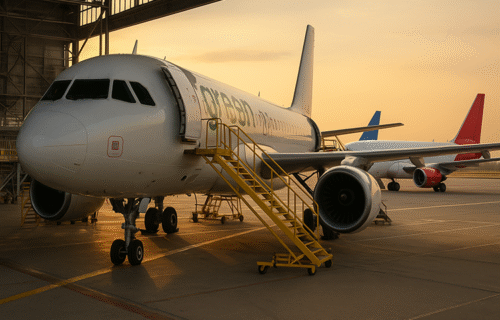The world’s aviation sector is growing faster than at any time since the pandemic, but its success rests on far more than passenger numbers. Behind the surge in demand is a complex mix of production backlogs, maintenance bottlenecks, workforce shortages, environmental pressures, and safety concerns that will define the next two decades of flight.
Airbus and Boeing are under pressure to deliver jets at a scale never seen before. Together, they are expected to hand over more than 1,300 aircraft in 2025, with ambitions to exceed 2,000 annual deliveries later this decade. Yet the global order backlog is so large it equals more than half of today’s active fleet, signalling years of unmet demand. Airbus is pushing toward higher monthly production rates, while Boeing’s output remains under strict oversight.
Alongside new deliveries, airlines face heavier bills for repair and maintenance. Annual spending on servicing aircraft is set to climb toward $120 billion in 2025. Older jets are flying longer than planned, while newer models are showing teething problems that require fixes earlier than expected. With limited repair slots and staffing shortages, airlines are forced to ground aircraft longer, driving up costs and limiting capacity.
A shortage of skilled mechanics is one of the sector’s biggest headaches. Retirements are outpacing training, leaving airlines short of licensed technicians. Even optimistic forecasts suggest the gap will persist into the 2030s. Training schools and apprenticeship schemes are expanding, but the pipeline is struggling to match demand. Without enough qualified workers, airlines risk delays, higher ticket prices, and compromised turnaround times.
Growth in fleets collides with climate pledges. Aviation contributes a modest share of global carbon dioxide emissions, but high-altitude effects mean its warming impact is greater. Sustainable aviation fuel use doubled in 2024, yet it still makes up less than one percent of total jet fuel consumption. Research into hydrogen and electric aircraft is advancing, but large-scale deployment is decades away. This leaves governments and airlines facing tough questions: can airport expansions and record jet orders be squared with climate targets?
The demand boom is not evenly spread. Asia and the Middle East are leading with new airports and fleet growth, while Europe and North America focus more on replacing ageing planes. India alone has two major airports scheduled to open by 2026, while Gulf carriers continue to anchor global hubs with new long-haul fleets. This uneven geography raises questions about where future maintenance and training capacity should be built.
By historical standards, flying remains remarkably safe. Accident rates have fallen over decades thanks to better technology and procedures. Yet 2024 saw a spike in incidents and fatalities compared with the year before, a reminder that safety cannot be taken for granted. Runway excursions and landing-gear failures remain the most common events. With production lines under pressure and airlines relying on stretched maintenance teams, regulators warn that vigilance is critical to avoid slipping standards.
For travellers, the implications are both visible and hidden. Delivery delays mean older aircraft are staying in service longer, affecting comfort and raising questions about reliability. Congestion at airports may worsen as capacity struggles to keep up with demand. Ticket prices could edge higher if repair bottlenecks and workforce shortages increase airline costs. At the same time, passengers are being asked to support climate goals through higher levies, encouragement to use rail on short routes, or offset schemes that remain controversial.
Aviation’s growth is both a sign of recovery and a source of strain. The industry must deliver thousands of new aircraft, overhaul its maintenance and training pipelines, and keep safety and climate promises intact. For governments and airlines, the challenge is to balance global connectivity with environmental limits, workforce realities, and public trust. If those balances hold, the skies will remain open and safe; if not, congestion, costs, and climate contradictions may cloud the horizon.
Source: comp.
